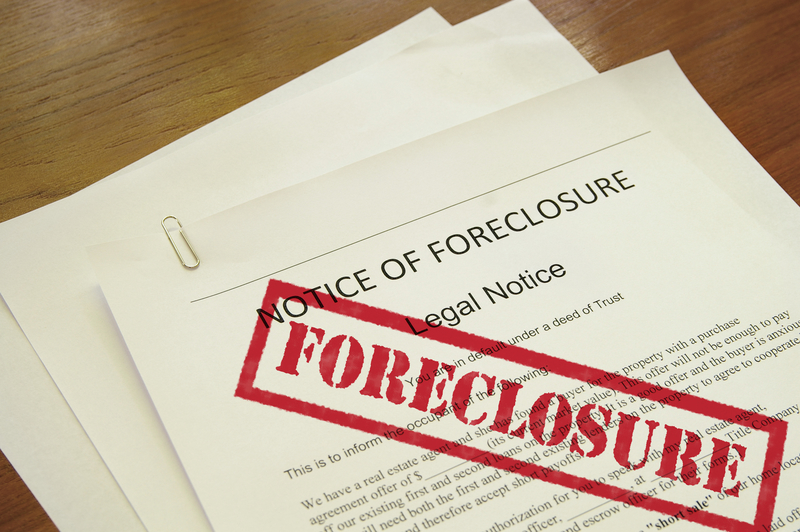Non Recourse Loan
With a non-recourse loan, no personal guarantees are required. In the case of a default, the lender can only take possession of the subject property. Thus, the borrower’s personal assets are not at risk.
Why You Should Join the Non-Recourse Loan Club?
Congratulations! If you are reading this and wanting to learn more about non-recourse financing, then you have the opportunity to join one of the most exclusive groups in America – The Non-Recourse Loan Club.

There isn’t really a club. It is just that Non-Recourse Lending is one of the best-kept secrets that an elite group of mostly wealthy developers and investors of commercial real estate reap the benefits of. In fact, these high net worth individuals have real estate attorneys, estate trust attorneys and financial advisors that insist they only obtain non-recourse financing.
Just so you know, non-recourse loans are available to the average Joe in America too. You just need to have good credit, a good income property in mind, and the down payment. So why do so few of the middle class seem to know what a non-recourse loan is? It is not that the lenders that offer these loans try to keep them a secret. It’s just that the majority of investment property lending is done by commercial banks which almost never offer non-recourse loans to their customers. Why don’t they? Because if they did they would be giving up their largest most powerful weapon – Recourse.
| FHA | Low 85% LTV | 35 year Fixed Rates |
| CMBS | 75% LTV | Great 10 year fixed rates, lower net worth ok |
| Life Company | 70% LTV | Very low 25 year fixed rates |
| Fannie Mae | 80% LTV | Interest Only, Fix rate up to 30 years |
| Freddie Mac | 80% LTV | Interest Only, 10 Year fixed, 20-year term |
| REIT | 70% LTV | Low rates, 10 years fixed |
| Private Funds | Not perfect credit, lower net worth ok |
Call us: 503-376-7303 to find the best Non-Recourse Loan for you
Why Banks Love Recourse Loans
Recourse gives the lender an insurance policy. You give it to them when you sign a guarantee that legally makes them whole should they have to foreclose on the subject property and not be able to recover the full amount of their loss from selling the property. Making them whole means that the lender can use any of your personal assets to make up a deficiency should they sell the property for less than you owe them. This deficiency can include back mortgage payments, delinquent property taxes, real estate commissions, and expenses to manage and maintain the property while they are selling it. Let’s not forget the bank's attorney and court fees. Recourse legally gives the bank carte blanch to go after your home, your bank accounts, your autos, your RV, and even your child’s 529 education account to pay for the deficiency. Only your retirement funds are safe.

And, by the way, the bank already has a list of all your assets. You listed them on their loan application. Reporting requirements in your loan docs have you update them annually. They likely made the loan to you because you have other assets. Yes, Banks love it when you have substantial other assets. I have clients that purposefully do not list all their assets on a bank application when taking out a recourse loan – not that we advise it. But it is obvious why.
A Non-Recourse Loan Lowers Your Risk
Just think about it. Commercial Real Estate Investing is a business. Sure, it is often sold as a passive investment. But experienced investment property owners will tell you that to be successful there is not much that’s passive about it. And like all businesses, there is an inherent risk. Most businesses that go belly up don’t do so because they have a mediocre product or service. The number one reason that businesses fail in America is poor management. This is true for commercial real estate investments too. The second reason is that the owner is just in the wrong place at the wrong time. An example: You purchase a 30-year-old “C” class apartment complex with no amenities and dated floor coverings, fixtures, and appliances. Two years later 3 brand new multifamily developments with club houses, swimming pools, and brand new everything are built around you – slowly stealing your tenants.

Would you not take more real estate investment risks if you did not have to personally guarantee the loan? The answer is likely YES! Would you have more opportunity to soar as a property investor if you could find high net worth individuals to invest in your venture and contribute some of the down payment? Another YES, I would assume. And, would you not find it easier to attract investors if you could offer them the protection of non-recourse financing? Another likely YES!
I have been a commercial mortgage broker for over 20 years. Today, over 70% of the loans we do at Apartment Loan Store are non-recourse. And over 90% of the deals we put together that have passive investors have obtained a non-recourse loan from us. To further illustrate the value of joining the non-recourse loan club I would like to tell you a story about one of my clients.
The Real Estate Empire of Daniel G
In 2005, Daniel G, was a 58-year-old recently retired and widowed school teacher living in Tulsa, Oklahoma. I met Daniel at a commercial real estate seminar where I was a guest speaker. Full of enthusiasm would be an understatement to describe Daniel. Intense, focused ambition is more accurate. Gray hair, but looking fit and younger than his years he was full of confidence and very articulate when he came up to me and said, “You don’t know this yet, but you’re going to do a big loan for me.” He went on to tell me that he had retired early so he could work full time at his true passion – real estate investing. He wanted to leave a financial legacy for his kids. Starting 18 years prior, he had amassed what he called his real estate empire of 14 single-family rental homes which he proudly owned free and clear. “Why,” he stated, “should I run all over town maintaining all these properties when I can buy one large commercial complex with all the units under one roof”? He certainly had a point there.
Daniel already had an accepted offer from one buyer for 12 of his rental homes. He was going to do a 1031 tax-deferred exchange into the purchase of a mixed-use building. He planned to rehab it and repositioning it with much higher rents just like he had done with all is single-family home rentals. When he excitedly told me his plans for the new property I was hooked and said, “I would be pleased to work with you.”

The subject property was located right in up and coming to downtown Tulsa. Built in the forties, it had a lot of character. It had 9,000 square feet of commercial space on the first level. This consisted of a rented real estate office and 3 unleased retail spaces. There were 36 one bedroom, one bath apartment units on the 4 floors above that were dated and 60% occupied. Daniel planned on extensively remodeling these and converting them to 2 bedrooms 1.5 bath units. Building the tenant improvements to a suite for the 3 unoccupied retail spaces was also in his plan. To make this an even better deal, the city was offering a grant of $350,000 in urban renewal funds.
Daniel’s offer was accepted at $2,850,000. His budget included $720,000 for improvements. With closing costs, this brought the project up to $3,700,000. He put 35% down and I arranged a 24-month bridge loan for 2.4 million dollars.
So What Happened?
The great recession happened. Daniel completed the rehab brilliantly, on time and under budget. His development was a huge success. He had the apartment units 96% occupied and the commercial spaces 100% occupied – all with much higher rents just as he had planned. This enabled him to arrange a $2.5 million dollar perm loan to take out our temporary bridge loan with his local bank in early 2007. By October of 2009, downtown Tulsa was in a steep decline and the national economy was in deep recession. First, the real estate office went out and then two of the three retail spaces closed their doors. Only a thrift store that was doing a booming business remained on the first level. Most of the apartment units were full but many with lower rents.

Get This Loan Off Our Books!
In February of 2010, Daniel was in shock when he got a letter from his bank stating that his loan on the mixed-use building was in default and that he had 90 days to refinance elsewhere. Daniel went to the bank and told his buddy, Brian, a senior vice president, “there must be some mistake. I have made all my payments on time, I have excellent credit, and you know I am good for the payments! I have banked with you for over 10 years. Please don’t do this.” The vice president replied, “The last thing I want to do is call your loan, you are not only a good customer, but you are also my favorite customer. But we are between a rock and a hard place. Our survival is at stake too. It’s the (blank) bank regulators. They want this loan off our books.”

The bank officer went on to explain that with the three vacant retail spaces the debt service coverage ratio fell from a 1.65 to a 1.15. This was below the minimum 1.35 DSCR requirement in Daniel’s loan documents. This is what put him in default. Furthermore, downtown Tulsa was in freefall. To make matters worse, the bank had the building recently appraised and the value had dropped by about 25% to $2.7 million dollars. This made Daniel’s loan to value so high that the bank would have to put up reserves (funds they could not lend) equal to the outstanding loan balance to satisfy the regulators.
I tried to do an emergency bridge loan for Daniel and even negotiated a $400,000 reduction in principal with the bank if we could obtain financing. However, with downtown Tulsa’s economic downturn, the empty commercial spaces, and the decline in property value, no one wanted to lend enough to pay off the bank.
Daniel was advised to declare bankruptcy. But this was not who he was. He stated that he did not believe in bankruptcy. And why should he ruin his good name and credit when he could ride this thing out. The good news was that the bank was going to give him more time. They were so pleased that he was negotiating with the federal government to lease the entire first floor.
The Foreclosure
Four months later Daniel got a letter with his last mortgage payment check enclosed. The bank was starting foreclosure. They gave Daniel 35 day’s notice to pay off the loan in full, or the property would be sold at public auction to the highest bidder. The letter was not even from his bank but from a larger bank that had taken it over.
Unfortunately, Daniel’s loan documents mandated a non-judicial foreclosure and had a “Power of Sale Clause.” This mandated that the bank could foreclose outside of the court system (legal in Oklahoma). In other words, the lender does not have to file a lawsuit to foreclose. Then there was the guarantee that Daniel signed when he took out the loan. This allowed the bank to obtain a deficiency judgment should the bank sell the property for less than Daniel owed them.

The Deficiency Judgment
Daniel says that being served with the deficiency judgment was very unpleasant. The bank did not seem to even try to get a fair price for the property. They sold it to the highest bidder for only $1.7 Million Dollars. They were going after him for a deficiency of $746,000. In the document, his name was listed as the Judgment Debtor, and the Bank was listed as the Judgment Creditor. There were liens filed against his 2 remaining rental homes and levies filed against his bank accounts. His car, along with his two antique Buicks also had liens filed on them. How did they know about the Buicks? Oh, of course – they were listed on his personal financial statement. Through the advice of an attorney early on, Daniel had homesteaded his home which made it exempt from the deficiency judgment. His retirement was also exempt.
What If Daniel Had Obtained a Non-Recourse Loan?
This is a very simple answer. In the case of a default on the loan, all Daniel would have to do if the property failed and could not be turned around is to hand over the keys to the lender. Sure, this would still be painful. But his personal assets would not ever come into the equation.

Non-recourse loans require that the key principals vest the property in a single asset entity like an LLC. The loan would have been made to the LLC, not to Daniel personally. In the occurrence of a default, the lender’s only recourse is against the LLC that owns the property directly. And being that the LLC only owns the subject property and no other assets, the lenders only recourse is to take back that property. If the lender sells the property for less than the principal balance, well, that’s the lender's problem.
The term that is used legally is that the borrower is “exculpated” from being liable. This would also not likely affect Daniels personal credit since the loan was not made to him personally.
What Type of Loans Are Typically Non-Recourse?
Securitized loans that are sold have mortgage-backed securities on Wall Street like HUD/FHA, Fannie Mae, and Freddie Mac are typically non-recourse. Commercial Mortgage Backed Security (CMBS) loans are always non-recourse. Many loans made by Insurance Life Companies and Real Estate Investment Trusts (REIT’s) are non-recourse. Hedge Fund and Private lenders that do Commercial Bridge and Construction Loans are often non-recourse as well.

Can a Borrower Ever Be Personally Liable For A Non-Recourse Loan?
Surprisingly the answer is YES. Almost all non-recourse loans require the borrower to sign the “Bad Boy Carve-Outs.” These make the loan revert to recourse if there is fraud involved or gross negligence on behalf of the borrower. These occurrences include:
- The borrower commits a criminal act on the property
- The borrower commits fraud by purposefully misrepresenting the financials of the subject property during the loan application process or after the loan is made in the annual reporting documentation.
- The borrower has the single asset entity (such as an LLC) declare bankruptcy on the property.
- The borrower allows the insurance on the property to expire without renewal.
- The borrower does not allow inspections required by the lender or the lender’s agents to be done.
To find out more about non-recourse lending or if you qualify for a non-recourse loan for your project, please call one of our friendly experienced loan specialists at Apartment Loan Store: 503-376-7303

By Terry Painter/President Apartment Loan Store and Business Loan Store
CLOSING 97% OF OUR MULTIFAMILY LOANS AS PROPOSED
Getting the right loan and the lowest rate requires wisdom and finesse. If you’re ready to partner with a team of professionals who’ve built a foundation on straight talk and true strategy, we are the loan store for you.
28+ YEARS OF OVER-DELIVERING VALUE.
HUD Loans are one of the best options with the current level of interest rates. For a complete guide to HUD Multifamily Loans please go here:
